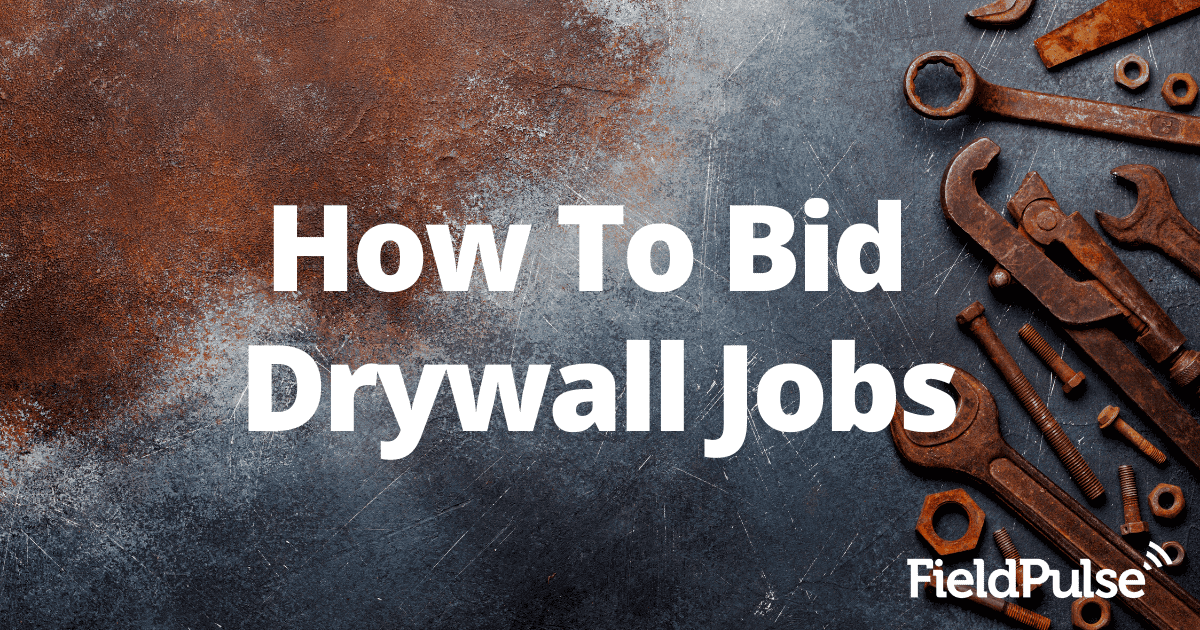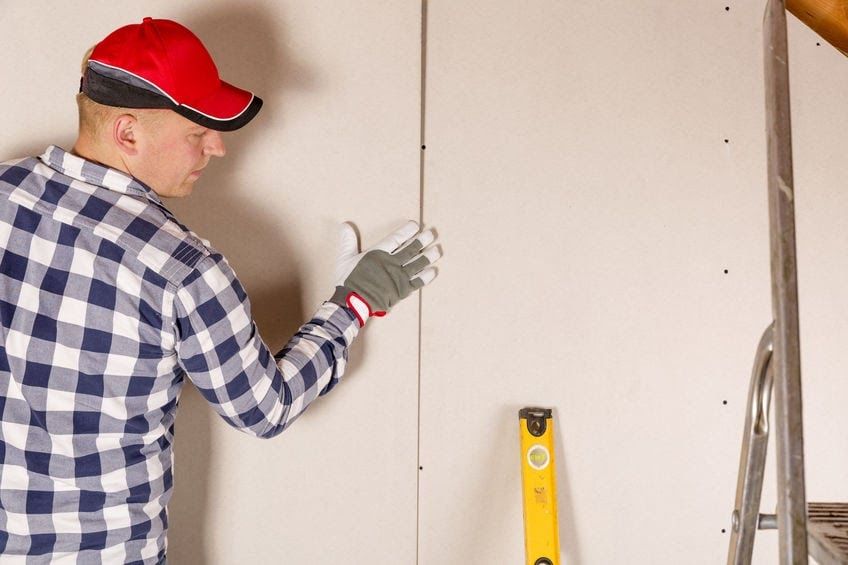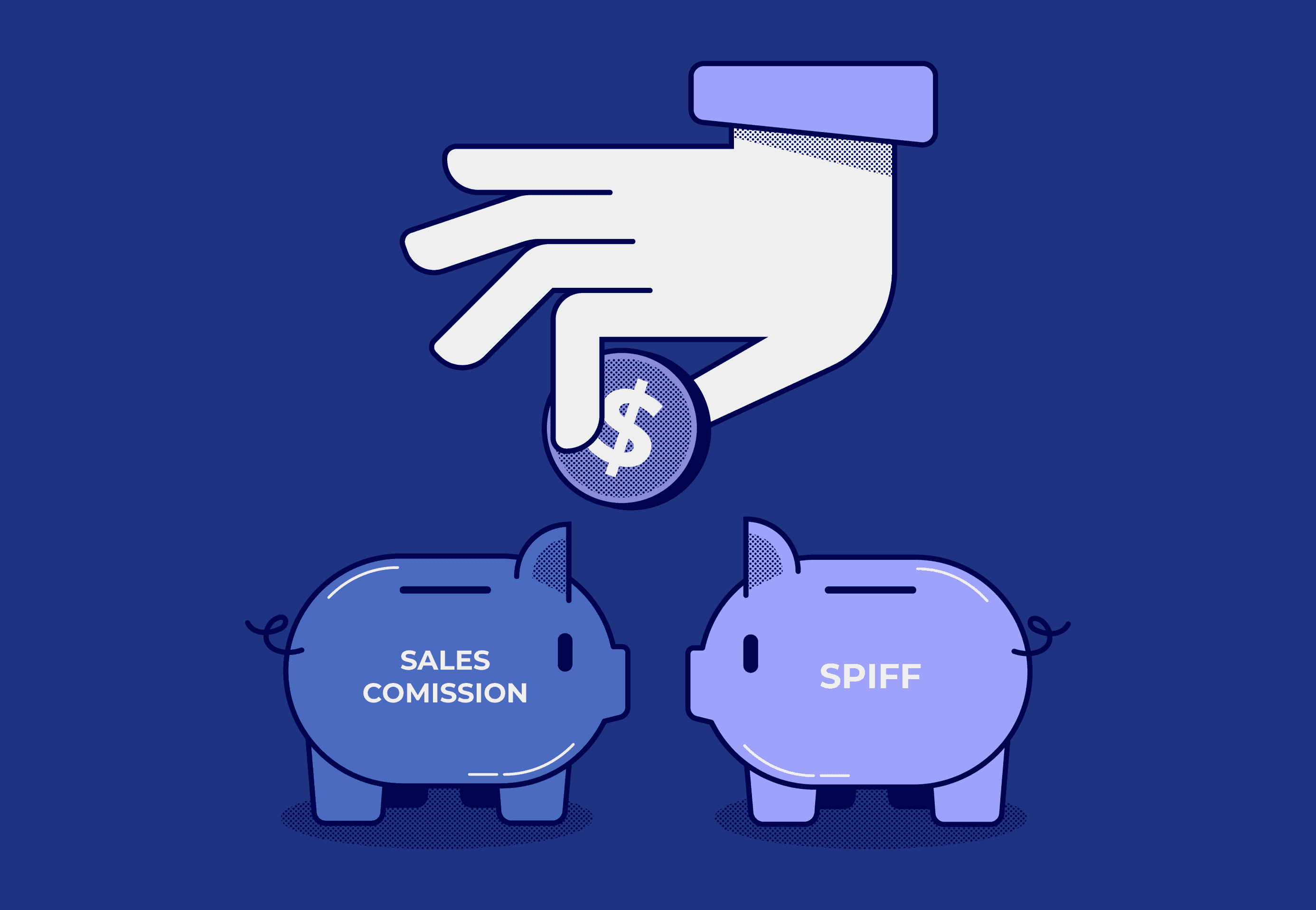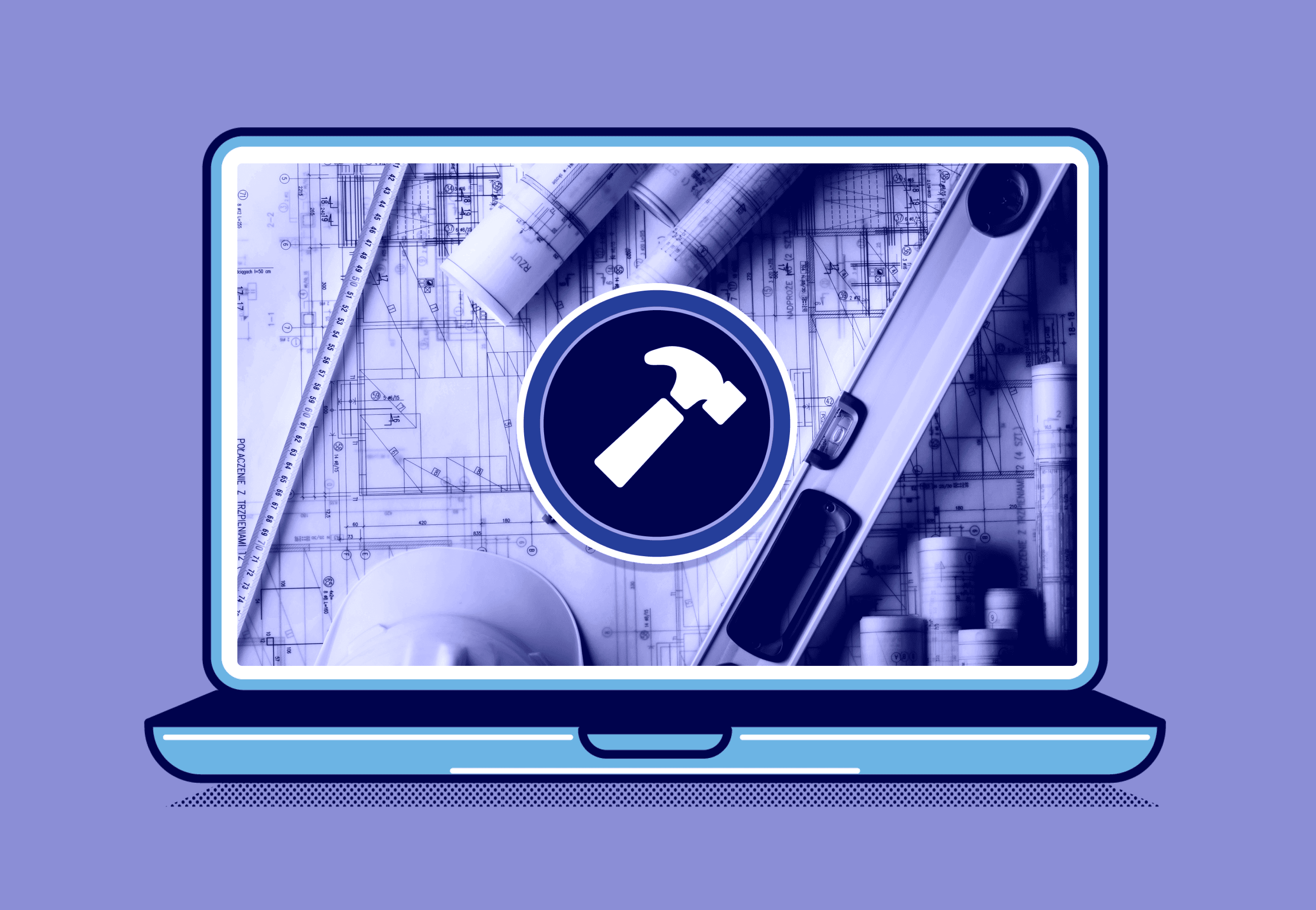How To Bid Drywall Jobs: Drywall Estimating Rule of Thumb
Read this blog for best practices when estimating drywall work, so you can boost the chances of a client accepting your bid and secure another profitable job.
Aug 8, 2024

As a drywall contractor, you always want to strive to create the most accurate project bid possible. When questioning how to bid drywall jobs for clients, it’s important to thoroughly understand each factor that must be addressed. Factors like labor cost, material cost, project scale, and estimated timing are a few things that must be verified before presenting a potential customer with a drywall project bid.

Not to mention, it’s worth remembering that you may be up against some strong competition when submitting a drywall bid to clients. Consider the following best practices to learn how to estimate drywall projects like a pro, so you can boost the chances of a client accepting your bid and secure your contracting company another profitable job.
How To Price Drywall Jobs
Before navigating how to price drywall work or presenting a drywall bid to a potential client, you first must consider the different types of pricing and billing strategies available to you. Start by determining the difficulty level, manpower requirements, and timing of the project to help determine which method is best for pricing your drywall services.
1. Define Your Pricing Strategy

When it comes to bidding drywall jobs, a drywall contracting company has two pricing strategies to choose from: an hourly rate or a flat project rate. Typically, the decision between either an hourly or a flat project rate comes down to project and customer expectations.
An hourly rate may be a safe bet for most drywall contractors who believe the project will be long-term and may incur potential changes. A flat-rate pricing strategy may be better suited for project types that expect minimal alterations to plans and can be easily calculated by the contractor in the long run.
In simpler terms, here’s what the calculation process for either strategy should look like.
How to Calculate Hourly Rate For Drywall Services
Have the ongoing costs to operate your business as well as your desired profit and work schedule in mind to calculate an hourly rate for drywall jobs.
Step 1: Determine your annual overhead costs and business expenses.
Step 2: Determine how much revenue you want or need to make annually.
Step 3: Determine how many billable hours you expect to work each year, with the support of an error margin.
Step 4: Determine a profit margin outside of your annual salary.
Step 5: Add up overhead cost, annual salary, and expected profit margin, and divide the sum by billable hours to develop your drywall project hourly rate.
How to Calculate a Flat Rate Pricing For Drywall Services
Have a predetermined hourly rate and billable hours in mind to calculate a flat rate for drywall bids.
Step 1: Calculate billable hours required for drywall project completion, with the support of an error margin.
Step 2: Determine overhead costs per project, including labor, materials, transportation, and administrative costs.
Step 3: Multiply your anticipated billable hours for the job by your hourly rate or square footage to calculate your price, then add the overhead costs with a fair markup to develop your flat rate.
Step 4: Compare your newly calculated rate against the local competition to ensure fair pricing.
2. Define Your Billing Structure

Once you have an hourly or flat project rate ready to go, you’ll also need to also choose a billing structure before you present your bid to a potential client. For drywall project bidding, a contractor can choose from either a lump sum billing structure or a detailed billing structure.
Lump-Sum
Lump-sum billing structures are very straightforward, often making them a less favorable billing structure when establishing how to bid drywall jobs. Lump-sums do not include a detailed breakdown of how your company calculated the project price, possibly raising a few questions with customers who wonder where their money will be spent.
Detailed Billing
Detailed billing structures, on the other hand, are much more robust than lump-sum practices. Detailed bills present the full scope of the drywall project clients, including a detailed breakdown of all costs involved. This allows the contractor to easily identify and fix pricing errors before presenting the bid and helps educate clients on pricing details.
Drywall Price Chart
Even with a strong pricing strategy, you’ll likely have trouble learning how to write an estimate for drywall installation without knowing the actual price of the drywall. So, it’s crucial to consider the type of drywall that will be used to complete the entire project. The cost per sheet will vary depending on the type of drywall, creating overall differences in your final bid.
Here is a quick drywall price chart that details each commonly-used drywall type:
Standard 1/4": $8 – $12 per sheet. Used for covering textured walls, curved surfaces, and repair purposes.
Standard 3/8": $8 – $15 per sheet. Commonly used for curved walls and repair purposes.
Standard 1/2": $8 – $20 per sheet. Most popular drywall type, used for walls and ceilings.
Standard 5/8": $10 – $20 per sheet. Offers fire resistance and soundproofing.
Purple Board: $12 – $22 per sheet. Commonly used in bathrooms, kitchens, and laundry rooms for moisture and mold resistance.
Paperless: $13 – $26 per sheet. Uses an outer fiberglass layer rather than paper for enhanced rot and mold resistance.
How To Price Drywall Installation Jobs

Stuck on how to price a large drywall job? We’ve been there, and luckily, the process is not as daunting as it seems. On average, a typical household drywall installation costs between $1,000 to $2,887 per project, which equates to $1.50 - $3 per square foot. This pricing includes both material and labor expenses, as well as any finishing/texturing services that may be incorporated.
Minus material and finishing costs, drywall labor cost per square footage generally equates to a price of $0.50 to $0.75 per square foot.
How to Bid Drywall Jobs
After you combine the drywall and labor costs details detailed above, your drywall contracting company is one step closer to preparing a final drywall job bid. If you’re left with questions on how to bid drywall jobs, take a look at the variety of resources and best practices readily available to help complete the process.
Drywall Estimating Rule of Thumb: By Square Foot
Ever wish there was a shortcut for how to bid drywall jobs? You’re not alone—fortunately, there is a drywall estimating rule of thumb for common residential installation projects that will help determine the amount of drywall needed to successfully complete a job. Jot down the following calculations to gather a general estimation of the square footage of drywall necessary for certain areas including ceiling height and standard square footage.
9' ceilings: living area X 3.8 + 500 sq ft (approx) for garage.
10' ceilings: living area X 4.1 + 500 sq ft (approx) for garage.
11' ceilings: living area X 4.5 + 500 sq ft (approx) for garage.
Add 0.4 to multiple for each additional foot in ceiling height.
How to Estimate Drywall Jobs

This rule of thumb is great when you’re figuring out how to price drywall installation jobs by square footage, however, it’s not exactly the full picture. To realistically price your bid (and most importantly make a profit), you must also consider the costs of additional materials required to complete the job.
If you’re unsure where to start, FieldPulse’s contractor calculator is a fantastic resource when estimating which material costs should be added to a complete drywall project bid. Plus, check out these additional estimating tools to calculate the specifics as realistically as possible.
How To Estimate Drywall Mud
Drywall mud is used to smooth drywall surfaces and joints to ensure a clean finish. In addition to the drywall itself, contractors must incorporate mud costs into a bid. Use this drywall mud calculator to estimate costs.
How To Estimate Drywall Materials
The typical materials required for a household drywall project include sheets of drywall, screws, drywall tape, and mud. Using this calculator tool , simply input your room dimensions to receive a breakdown of the estimated amount of material you’ll require. These amounts can then be incorporated into the material costs you’ll include in your overall construction project bid.
How To Estimate Drywall Finishing

Drywall finishing utilizes mud, tape, and a smoothing knife to create a smooth finish that can be painted over. With the above drywall mud calculator , you may also want to consider if the customer will prefer an enhanced finish, such as texture, across the entirety of the drywall. This will require contractors to purchase a bit more mud (and additional labor costs).
Drywall Bid Example and Frequently Asked Questions
To understand how to bid drywall jobs once and for all, let’s take a look at a few common questions and examples that can help most drywall contractors envision the total factors included in a final bid.
How much should I charge to hang and finish drywall?
Based on the potential total square footage of drywall used, a drywall contractor should charge $1.50 to $3 a square foot to hang and finish drywall. Which individual pricing between $1.50 and $3 a contractor chooses depends on the level of job difficulty and professional experience.
How much would it cost to drywall a 1500 sq ft house?
With drywall installation costs ranging anywhere from $1.50 to $3 per square foot, the drywall cost of a 1500 square foot home would be anywhere from $2,250 to $4,500 for the total square footage, again relying on job difficulty and professional experience.
How much drywall do I need for a 10x12 room?
Assuming the room has an average ceiling height of 9 feet, a 10x12 room would require 17 sheets of the commonly used 4’x 8’ drywall sheets for the total square footage.
Drywall Bid Template

Once all of your measurements and expenses are ready for a drywall bid, you’ll need to present these details neatly and efficiently to potential clients. A drywall bid sheet can help break down the estimate of your services by highlighting all costs from labor to material expenses. The more detailed your bid, the more likely the client is to see you as the best contractor for the job.
Streamline Drywall Installation and Repair Operations

As the housing market booms, a contractor’s drywall services have been in heavy demand. With more and more jobs coming into the pipeline, you’ll want your daily operations to remain in check to meet customer needs. With FieldPulse’s business management app, creating a drywall service proposal and scheduling jobs is easier than ever before.
Operations are completed from one, easy-to-use platform, so drywall contractors spend less time hunting down data and more time on large drywall jobs. Without a ton of paperwork cluttering your workspace, you can get back to what you do best—running a reputable drywall contracting company. Book a demo with us and learn how our field service management software can help your service-based business.


